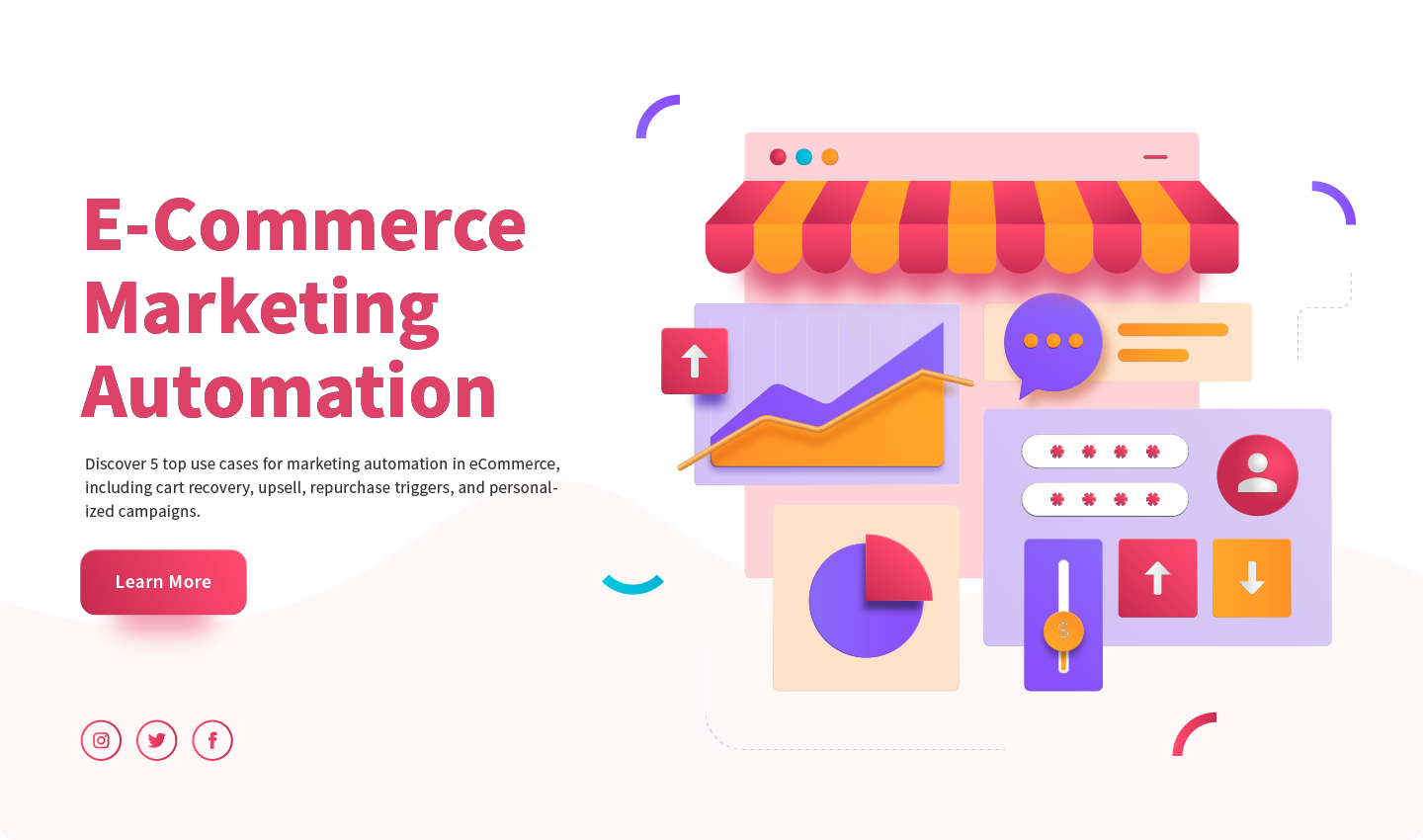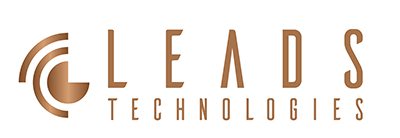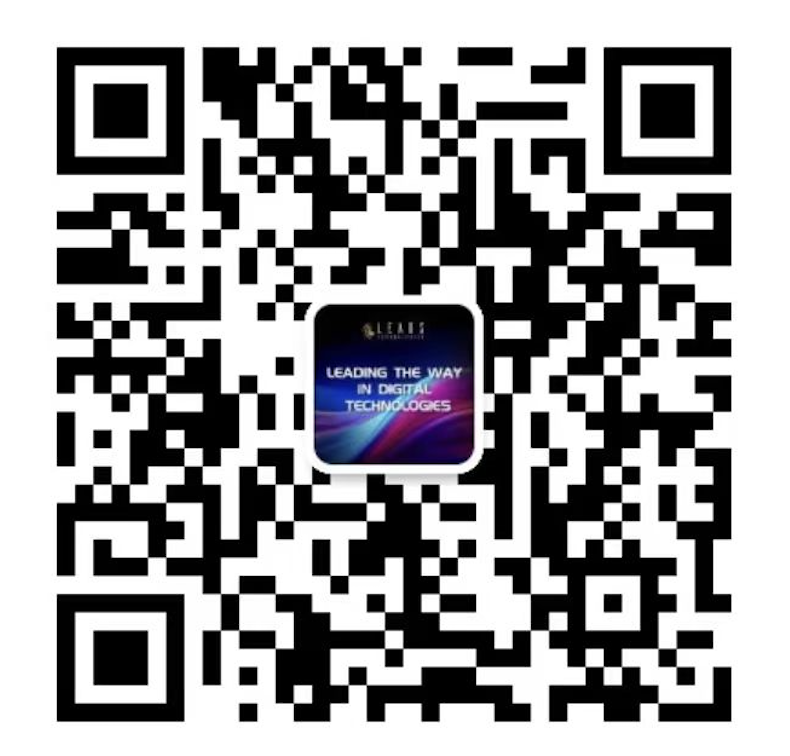
5 eCommerce Marketing Automation Use Cases with Results
CDP, Marketing Automation, Personalized Marketing
26 August 2025
- Introduction|Why Do E-commerce Businesses Need Automation More?
- Cart Abandonment Recovery
- Reorder Reminders & Restock Notifications
- Product Recommendations & Cross-sell/Upsell
- VIP Customer Management & Loyalty Programs
- Omnichannel Integration (EDM, APP Push, LINE)
- Conclusion & Best Practices
- References & Further Reading
- Introduction|Why Do E-commerce Businesses Need Automation More?
- Cart Abandonment Recovery
- Reorder Reminders & Restock Notifications
- Product Recommendations & Cross-sell/Upsell
- VIP Customer Management & Loyalty Programs
- Omnichannel Integration (EDM, APP Push, LINE)
- Conclusion & Best Practices
- References & Further Reading
Chapter 1: Introduction|Why Do E-commerce Businesses Need Automation More?
In the e-commerce industry, frequent customer interactions and massive volumes of data make marketing automation not just an “option” but a “necessity.” From product exposure, to checkout, to repeat purchases, every stage contains countless subtle factors that influence conversion rates.
However, many e-commerce companies still rely on manually set EDM campaigns or static ads, resulting in communication content and timing that cannot adapt in real-time to customer behaviors—missing optimal conversion opportunities and even wasting resources.
Marketing automation leverages data-driven logic to automatically enable “precise and real-time” interactions based on customer behaviors and lifecycle stages, while integrating across multiple channels (e.g., websites, Email, LINE, App Push), ensuring each customer enjoys a more personalized and conversion-driven shopping experience.
This article will cover:
- The 5 most common and practical automation use cases
- The operational logic, technical requirements, and real-world performance metrics of each scenario
- Practical recommendations to help e-commerce businesses of different scales start with “single-point” automation and gradually build a unified conversion flow
📌 This article is suitable for: brand e-commerce operators, marketing managers, CRM/membership specialists, or strategy decision-makers currently implementing e-commerce automation tools.
Chapter 2: Cart Abandonment Recovery
Cart abandonment is one of the most common and frustrating causes of conversion loss in e-commerce. Statistics show that the global average cart abandonment rate exceeds 70%. Customers may leave the page due to pricing, shipping fees, complicated checkout processes, or simply being distracted. Without an immediate recovery mechanism, these potential transactions turn directly into lost revenue.
Marketing automation offers a standardized and effective solution: when customers add items to their cart but fail to complete checkout, the system automatically sends reminder notifications within a set timeframe—sometimes including discount codes, limited-time offers, or low-stock alerts—to increase the likelihood of return visits.
Automation Workflow
- The customer adds an item to the cart but does not complete checkout
- The system detects no payment completed within N minutes/hours after leaving
- A reminder Email or App/LINE push notification is automatically sent
- Based on whether the email is opened or clicked, the next reminder step is triggered or the workflow ends
Practical Recommendations
Reminder Timing
The first message is recommended within 1–2 hours after cart abandonment for the best effect; a second follow-up can be scheduled within 24 hours
Content Strategy
Include the customer’s name, product thumbnails from the cart, and limited-time promotional incentives to increase open and click rates
Channel Mix
If both Email and LINE/App Push are available, test which channel delivers the highest CTR, then focus resources there
Performance Data Reference (Example: Mid-sized Fashion E-commerce in Taiwan)
| Metric | Before Automation | After Automation (30 Days) |
|---|---|---|
| Cart-to-Order Conversion Rate | 7.4% | 15.2% |
| Email Open Rate (First Reminder) | N/A | 36.8% |
| Click-through Rate (with Promo Code Link) | N/A | 12.3% |
| Average Conversion Time After Return Visit | N/A | -38% |
📌 Cart abandonment recovery is an excellent entry point into marketing automation. It requires low technical effort, can be launched quickly, and delivers immediately visible results.
Chapter 3: Reorder Reminders & Restock Notifications
For frequently purchased products such as health supplements, skincare, pet supplies, or food and beverages, timely “restock reminders” not only improve convenience but also effectively stimulate repeat purchases.
Marketing automation can calculate replenishment cycles based on purchase history and proactively send reminders via Email, App Push, or LINE—sometimes bundled with exclusive offers—to increase customer stickiness and lifetime value (LTV).
Automation Workflow
- After a customer completes a specific purchase, the system records the date and product category
- A replenishment reminder schedule is set based on the product lifecycle (e.g., 30 days, 60 days)
- Before expiry, a reminder message is automatically sent, along with related recommendations or limited-time promotions
- If the customer repurchases, the flow restarts automatically; if not, the customer enters the next remarketing strategy
Practical Recommendations
- Design Replenishment Cycles by Product: e.g., sheet masks set at 30 days, shampoo at 60 days, avoiding a one-size-fits-all approach
- Personalize Reminder Content with Purchase History: Increase relevance, e.g., “How are you liking the anti-aging serum you purchased last time?”
- Combine with Cross-sell Opportunities: Include related new products or complementary items in the reminder to increase order value
Performance Data Reference (Example: Taiwanese Health Supplement Brand)
| Metric | Before Automation | After Automation (60 Days) |
|---|---|---|
| Customer Reorder Rate | 21% | 38% |
| Email Open Rate (Reorder Reminder) | N/A | 42.1% |
| Email Click-through Rate | N/A | 14.6% |
| Average Days Between Purchases | 47 Days | 33 Days |
📌 Reorder reminders enhance customer experience, reduce brand churn, and serve as a stable strategy to boost LTV—especially effective for recurring replenishment product lines.
Chapter 4: Product Recommendations & Cross-sell/Upsell
One of the key strategies to increase average order value (AOV) in e-commerce is recommending related or upgraded products when customers show purchase intent or complete a transaction. Marketing automation can leverage browsing history, purchase behavior, and personal preferences to deliver personalized recommendations, greatly improving relevance and conversion rates.
Application Logic
- After viewing a specific product, suggest similar or complementary products (Cross-sell)
- After purchasing a lower-priced item, recommend upgraded versions, premium models, or add-ons (Upsell)
- Recommend popular products based on shopping journeys and behaviors of similar users
Automation Strategy Recommendations

Design Product Tags Logically
Categorize products by usage, price, and accessory relevance to effectively design recommendation logic
Deliver Recommendations at the Right Time
Optimal moments include “before checkout,” “on the order success page,” and “in the shipping notification email”
Integrate Across Channels
Real-time recommendations can be made on the website, while Email/LINE are best suited for re-recommendations 1–3 days after a transaction
Performance Data Reference (Example: Taiwan Fashion E-commerce)
| Metric | Before Automation | After Automation (45 days) |
|---|---|---|
| Average Click-through Rate of Recommendation Section | 3.2% | 9.7% |
| Conversion Rate from Recommended Products | 1.4% | 4.3% |
| Average Order Value (AOV) | NT$1,080 | NT$1,430 |
📌 Recommended products should not only be “Best Sellers,” but personalized based on preferences and context to truly drive conversions.
Chapter 5: VIP Customer Management and Loyalty Programs
In the highly competitive e-commerce market, customer acquisition costs continue to rise each year. Therefore, increasing the **Lifetime Value (LTV)** of existing customers has become a core growth strategy. This is where VIP management and loyalty programs deliver the greatest value.
Marketing automation enables brands to automatically identify high-value customers based on purchase frequency, spending, and engagement, then deliver personalized content or rewards that boost satisfaction, repeat purchases, and referrals.
Implementation Logic
- System automatically segments VIP/loyal customers based on spending and purchase frequency
- Design exclusive journeys for VIPs, such as membership anniversaries, birthday perks, hidden offers
- Trigger automated messages at key moments (e.g., tier upgrade notifications, reward issuance, event invitations)
Application Recommendations
- Clear tier structure: e.g., Annual spend of NT$10,000 = Silver, NT$30,000 = Gold, motivating customers to upgrade
- Personalized communication: tailor messaging with name, tier, and exclusive rewards
- Social engagement & event invitations: build long-term brand relationships with VIPs
Performance Data Reference (Example: Taiwan Home & Lifestyle E-commerce)
| Metric | Before Automation | After Automation (90 days) |
|---|---|---|
| Repeat Purchase Rate of High-Value Customers | 23% | 47% |
| Email Open Rate of Exclusive Campaigns | N/A | 51.2% |
| Annual Spending Increase per VIP | N/A | +38% |
📌 Managing loyalty customers should be data-driven and automated rather than intuition-based, ensuring both stronger loyalty and revenue growth.
Chapter 6: Omnichannel Integration and Messaging Coordination
In today’s e-commerce, customers receive communications from multiple channels: Email, LINE, App Push, website pop-ups, and more. Without proper coordination, this may cause message fatigue, redundancy, or even harm to brand perception.
One of the biggest strengths of marketing automation is unifying these channels into a consistent and well-orchestrated engagement strategy — delivering the right message, at the right time, through the right channel.
Integration Strategy
- Set channel priorities (e.g., Email as primary, LINE as secondary)
- Select optimal channel based on device usage and past engagement
- Establish “exclusion rules” to prevent sending the same content across multiple channels
Implementation Tips
Build a channel behavior tracking mechanism
Log whether each EDM or App Push is opened/clicked as the basis for future recommendations.
Apply a frequency allocation model
Set a maximum number of sends per week and let different channels complement each other instead of duplicating.
Establish a message priority system
Ensure that promotional messages, reminders, and content sharing each take a balanced proportion without overloading
Performance Data Reference (Example: General Retail E-commerce)
| Metric | Without Multi-channel Integration | After Integration (60 Days) |
|---|---|---|
| Total Engagement Rate (Open + Click) | 16.3% | 27.5% |
| Unsubscribe / Block Rate | 2.4% | 0.9% |
| Customer Complaints of “Too Many Messages” | Significantly High | Significantly Reduced |
📌 Multi-channel integration is not about sending more messages, but about maintaining consistent pacing, avoiding duplication, and ensuring channels complement each other to improve engagement quality and conversion rates.
Chapter 7: Conclusion & Best Practices
In this article, we explored five representative automation scenarios in e-commerce: cart abandonment reminders, restock/re-purchase notifications, product recommendation and cross-selling, VIP management, and multi-channel integration. These strategies not only boost revenue but also strengthen brand-customer relationships.
The true value of marketing automation lies in “continuous and personalized customer engagement,” not just one-off campaigns. When designed properly, automation feels timely, conversational, and caring—leading to higher conversion and greater brand trust.
Three Practical Recommendations:
- Start Small, Expand Gradually: Begin with low-barrier, high-impact flows like cart reminders or restock notifications, then expand into recommendations and VIP programs.
- Integrate Channels Before Scaling Content: Synchronizing Email, LINE, and App Push matters more than simply increasing content volume.
- Build Feedback Loops & Optimization Cycles: Use reports and KPIs to continually refine processes and align with actual customer needs.
📌 Marketing automation is not a high-barrier technology, but a scalable framework that can start simple and grow. With the right steps and pacing, every e-commerce brand can find its own automation success path.
Want to know how your business can implement marketing automation, or need expert help choosing the right tools and platforms?
The Leadstec expert team can design tailored solutions for industries like B2B, e-commerce, finance, and education.
👉 Contact Us to get free consultation today!
Chapter 8: References & Further Reading
Below are references and learning resources cited in this article, including official documentation, research reports, and hands-on guides to deepen understanding and adoption of marketing automation.
- Official Documentation & Platform Resources:
- Adobe Journey Optimizer: https://experienceleague.adobe.com/docs/journey-optimizer.html
- Salesforce Marketing Cloud: https://www.salesforce.com/products/marketing-cloud/
- Klaviyo E-commerce Marketing Platform: https://www.klaviyo.com/
- HubSpot Marketing Automation Documentation: https://knowledge.hubspot.com/marketing
- Industry Reports & Research:
- Statista – Cart Abandonment Rate Worldwide: https://www.statista.com/statistics/457078/
- Litmus – State of Email Marketing: https://www.litmus.com/resources/state-of-email/
- Salesforce – State of Marketing Report: https://www.salesforce.com/resources/research-reports/state-of-marketing/
- Recommended Reading:
- “What is Marketing Automation? A 5-Minute Guide to Core Concepts”
- “Top 10 Marketing Automation Tools in 2025”
- “How to Choose a Marketing Automation Platform: 5 Key Criteria & Process”
- “B2B Marketing Automation Complete Guide: How to Improve Lead Conversion”
- Adobe Journey Optimizer (AJO) Product Overview
- Marketo Product Overview
- HCL Unica Product Overview


